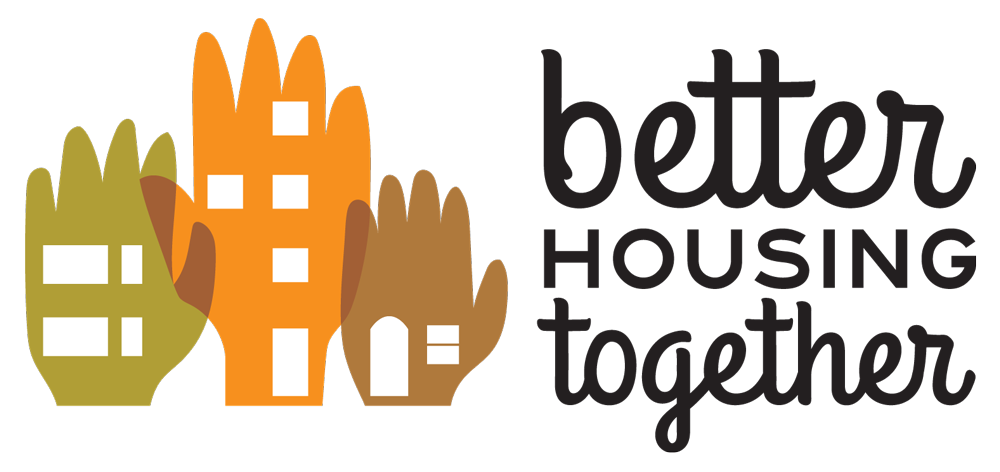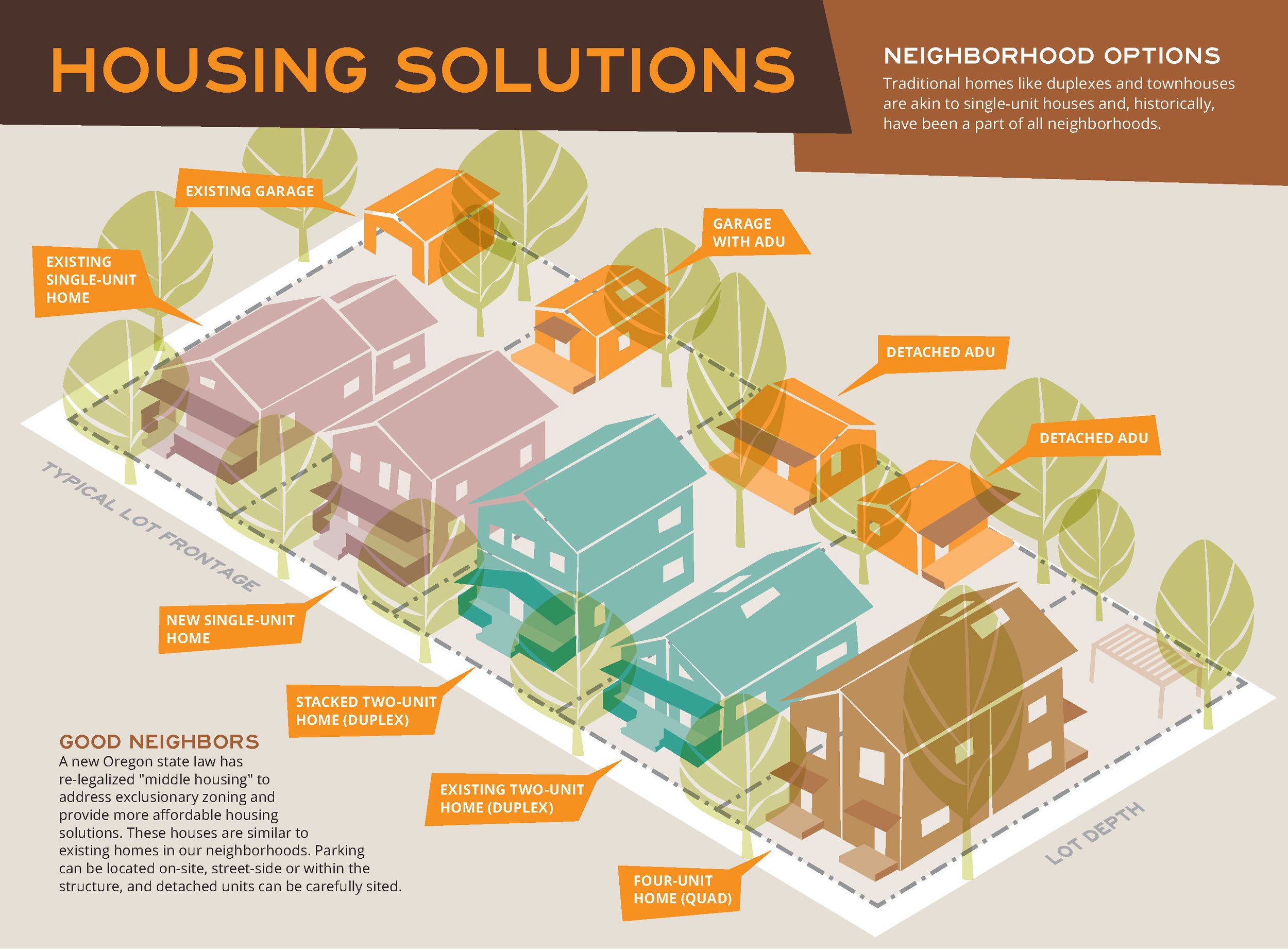In Oregon, thanks to House Bill 2001 and local efforts to re-legalize traditional neighborhood housing options, we use the term “middle housing” to refer to 5 common housing types that are akin to single-unit homes: the duplex, triplex, quad, cottage cluster, and townhome.
Better Housing Together is proud to be among the Oregon organizations that advocated for and advised on this transformational state law. HB 2001 is now influencing national housing policy actions and as a policy reference point for individual U.S. cities and states.
The term “Missing Middle Housing” was first coined by Daniel Parolek and includes the diverse range of housing types between the single-unit home and a large, multi-story apartment building. We haven’t built much “Missing Middle” in this country since the mid-20th century, but these are traditional and well-loved American housing types that have long-served a diversity of household types and income levels.
In 2021 and 2022, Eugene and Springfield are both in the process of updating their Middle Housing code. Learn more! The statewide Middle Housing law goes into effect July 2022.
GOOD NEIGHBORS, HOUSING SOLUTIONS
The traditional housing types re-legalized by HB 2001 are already present in many older neighborhoods and cities. They’re also called rowhouses, brownstones, two-flats, triple-deckers, bungalow courts, and courtyard housing. They are both typologically common and architecturally distinct throughout the country and world. Middle Housing is particularly common in walkable neighborhoods and much of it was built before workers commuted using personal automobiles. This is why older examples of Middle Housing rarely have on-site parking and do not dedicate large areas of their sites to paving. Instead, they enjoy backyard greenspace, street trees, and often a sociable front porch reaching out toward the street.
WHY DO WE NEED MISSING MIDDLE HOUSING?
This short video provides a quick introduction to "Missing Middle Housing" and explains why these diverse housing options play an important role in affordable, thriving, equitable, sustainable neighborhoods. In 2019, Oregon re-legalized these traditional housing types in cities statewide, and local communities now have the opportunity to customize their housing codes to align with current and future housing needs. Why do we need Missing Middle Housing? Start here!
LANE COUNTY’S HOUSING CRISIS
This short video introduces the context of Lane County's housing crisis. In 2018, the Eugene Area had the notable distinction of being the second-most constrained housing market in the country, trailing only Seattle, WA where the median home price was nearly $700,000. According to the United Way's ALICE report, 44% of our community is also living in poverty or in the social safety net, with the high cost of housing driving widespread household instability.
Better Housing Together first shared this movie at our 2018 Community Forum & Housing Exhibit, the public launch of our community project that was attended by nearly 300 people. At this event, we collected 2,200 data points and action items that have directly informed our advocacy and outreach efforts in the years since, including: advocacy and advising to create Oregon's landmark middle housing law (HB 2001), the creation of Eugene's first Affordable Housing Trust Fund, Lane County's first Affordable Housing Action Plan, and numerous projects to rework or eliminate unnecessary costs and delays in the housing supply process. The approach we take to this work is multi-sector and multi-disciplinary; our community and the complexity of our structural housing crisis require it.




